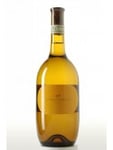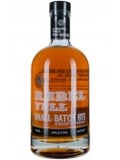4 min read
Festive Without the Fuss: 15-Minute Holiday Cocktails
The holidays are supposed to be about celebrating with people you care about and making memories that last. But...


Guest post by Tim Edison, WineTurtle.com.
Many people immediately think of baking or bread when they hear the term “yeast.” However, as you start discovering wine further, you’ll soon learn that it’s one of the most important aspects of wine making. Yeast is what makes grape juice into wine. It is a complex, finicky organism, but understanding it allows winemakers to produce wine easily. So, what is yeast?
Yeast is found everywhere: in and on our bodies, in food, on plants, in the air. It is a necessary organism for organic life and for the production of many foods but it is incredibly picky about what it will eat, and at what temperatures it will eat. Despite these finicky behaviors, yeast has the ability to make its own food when its primary foodstuff is unavailable.Yeast, while appearing simple to the eye, is a complex organism. It is a fungus, like mold or mushrooms, that lives when food and water is available to it and goes into a state of suspended animation when those things are not available. When in suspended animation yeast is dry and dusty.
Yeast has a sweet tooth: it lives on sugars, specifically glucose. But yeast can survive in the absence of glucose. If other sugars, starches, or alcohol is present, yeast creates enzymes to change these into glucose so that it can eat them. The DNA of yeast is full of information on dozens of enzymes it can make to create food for itself. It is a self-sustaining organism, and when it can’t find food, it simply goes into its resting state until food is available.
Basically, if yeast has access to glucose or things that it can turn into glucose, it will eat and further its life cycle. Although the temperature will play a huge role in whether or not this will happen.
The ability for yeast to thrive is dependent on temperature. In many ways, it mimics humans and other animals, although on a grander scale due to its lack of other systems.
Yeast grows best at 26℃ (79℉). It ferments best at 30-35℃ (86-95℉).
Most of the relationships yeast has with the world are symbiotic. When in balance, yeast can help with processes like wine and beer making. When out of balance, yeast can fail to do its job or cause infections. Yeast must be carefully monitored to avoid corruption and die off, which can release many toxins.
Yeast is an integral part of the wine making process. Essentially, it’s the only thing standing between grape juice and wine. Yeast plays a role during fermentation.
Fermentation is the part of the wine making process when the sugars in the grapes are turned into alcohol and when carbon dioxide is released into the wine.
There are many types of yeast, but only two used in the fermentation of wine.
During the fermentation process, the yeast eats sugar, in the form of glucose, and as a by-product, gives off alcohol, carbon dioxide, and heat. These two yeasts are optional choices for fermentation for several reasons:
Sulfur dioxide is added to nearly every wine, in powder or gas form. Some wine labels will include a notice that sulfites have not been added, and they are referring to this process.
Without yeast, wine would remain grape juice because there would be no way to convert the grapes’ sugars into alcohol. The yeast in wine making must be carefully monitored and controlled during fermentation to guarantee good color, aroma and taste and only two yeasts s. cerevisiae and s. bayanus are effective in wine making due to their resistance to sulfur dioxide, which preserves wine allowing for transport, cellaring and aging.
---
Tim Edison has an irrefutable love for wine and anything that has to do with it. Coming from a family of wine lovers, he developed this passion from an early age and has since had the chance to visit many of the notable wine regions throughout the world. He writes for WineTurtle.com.
Founded in 1934, Haskell’s has championed fine wines for over 80 years. We have 13 wine stores in Minnesota, two delis and one restaurant. As one of the top wine shops in North America, Haskell’s is known for legendary service and one of the finest collections of wine, beer and spirits. Led by Chairman and CEO Jack Farrell, and the Farrell family, Haskell’s continues to be at the forefront of the wine scene throughout the world. Haskell’s also can ship wine, beer & spirits all throughout the world, the U.S. and we deliver locally.




Nov 17, 2025by Beau Farrell
The holidays are supposed to be about celebrating with people you care about and making memories that last. But...
Nov 4, 2025by Beau Farrell
Between late November and early January, you're hosting more gatherings than the rest of the year combined....
Oct 21, 2025by Beau Farrell
The holidays are approaching, and you're planning gatherings that bring everyone together.
That often means catering...